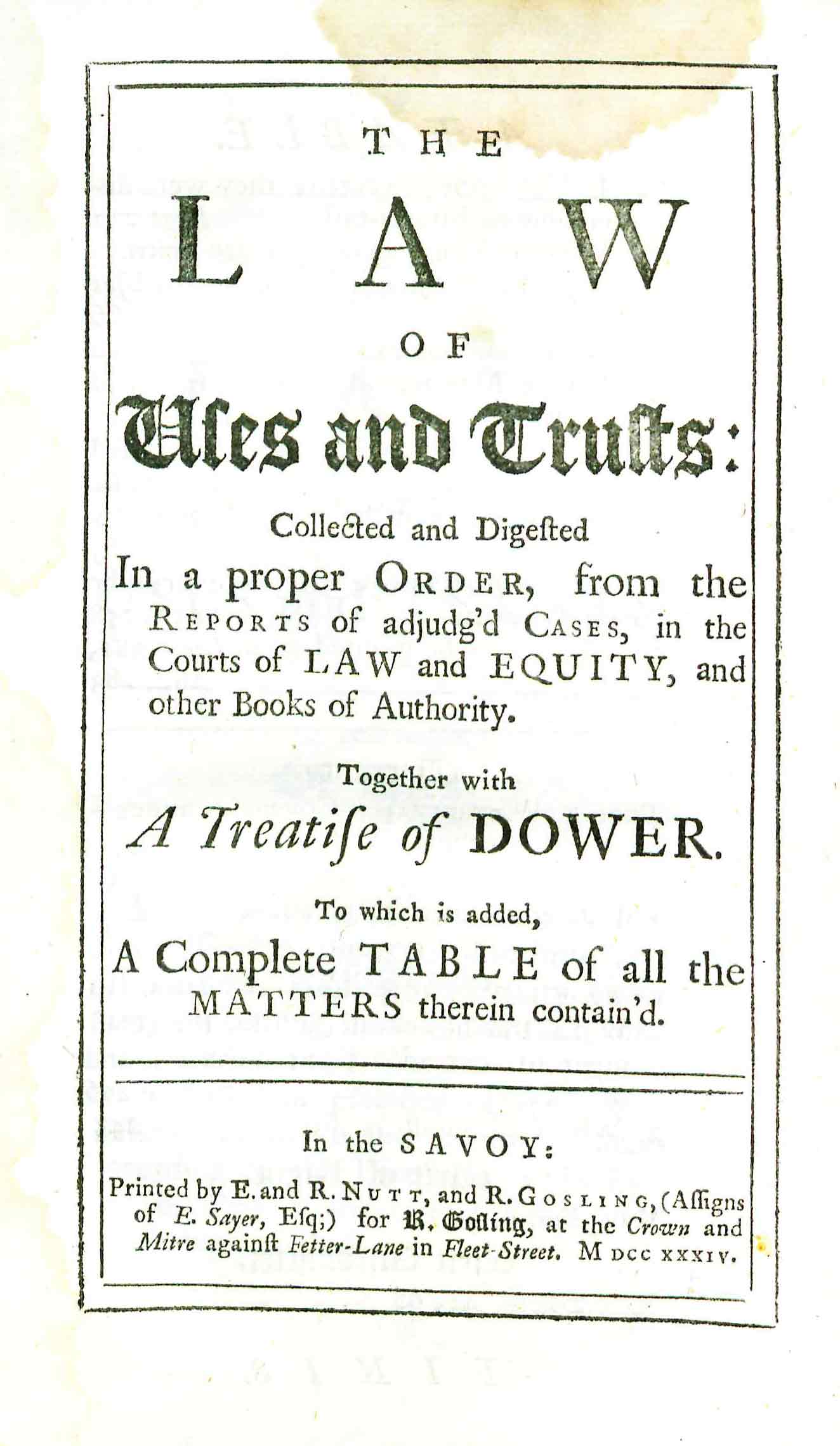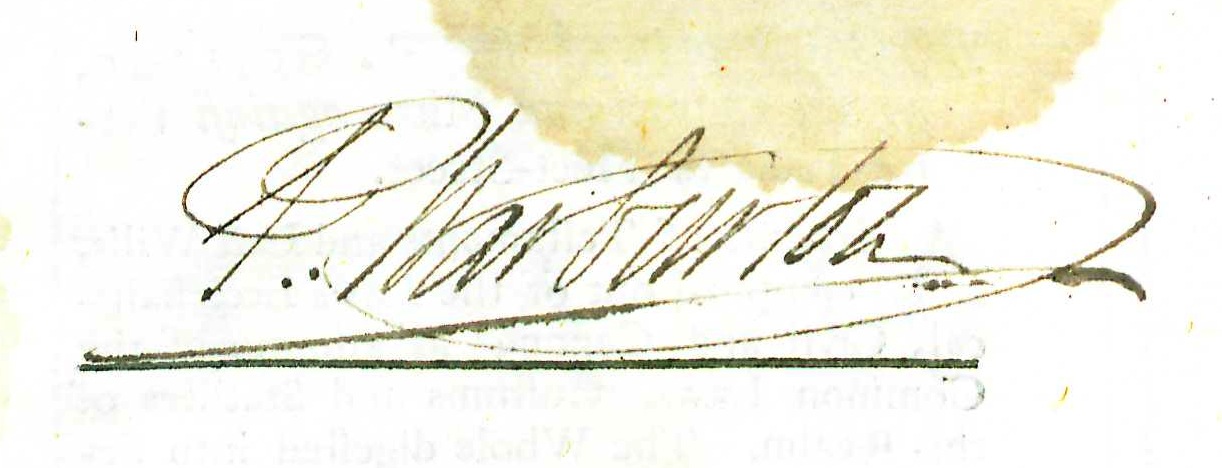The Law of Uses and Trusts
The Law of Uses and Trusts: Collected and Digested in a Proper Order, from the Reports of Adjudg'd Cases, in the Courts of Law and Equity, and Other Books of Authority. Together with a Treatise of Dower, to Which is Added, a Complete Table of All the Matters Therein Contain'd
by Geoffrey Gilbert
| The Law of Uses and Trusts | |
|
Title page from The Law of Uses and Trusts, George Wythe Collection, Wolf Law Library, College of William & Mary. | |
| Author | Geoffrey Gilbert |
| Published | In the Savoy: Printed by E. and R. Nutt, and R. Gosling (Assigns of E. Sayer, Esq;) for R. Gosling |
| Date | 1734 |
| Edition | First |
| Language | English |
| Pages | [4], 437, [81] |
| Desc. | 8vo (20 cm.) |
Gilbert’s defining moment came in the case of Annesley v. Sherlock which was a case that turned on the issue of whether appeals from equity jurisdictions in Ireland should be handled by the Irish, or by the British House of Lords.[4] Gilbert followed the orders of the British Lords in preference to those of the Irish, an action that led to the Irish Lords ordering his arrest.[5] Following Gilbert’s display of British loyalty, he was rewarded with the post of puisne baron of the English exchequer.[6] He was later appointed to the commission for the English Great Seal and knighted.[7] Shortly before his death he was elected a fellow of the Royal Society.[8]
Despite the influence he wielded during his lifetime, Gilbert’s major contributions to law came posthumously. After his death a large collection of manuscripts was found covering almost the entirety of English law and practice.[9] These works were gradually published in the decades following Gilbert's death and remained influential for decades after their publication. Some legal historians have called Gilbert probably the most eminent author who ever sat on the Irish Bench.[10] Among these treatises, The Law of Distresses and Replevins, published twenty-nine years after Gilbert’s death, provided a comprehensive examination of the laws governing replevin actions. It reached its fourth and final edition in 1823. "The great professional learning which this Treatise displays, has long been acknowledged, and the judicious manner in which it is disposed has ever been admired."[11]
Evidence for Inclusion in Wythe's Library
Listed in the Jefferson Inventory of Wythe's Library as "[Law of] Uses & trusts 8vo." and given by Thomas Jefferson to Dabney Carr. The Brown Bibliography[12] includes the first edition while George Wythe's Library[13] on LibraryThing indicates "Precise edition unknown. Octavo editions were published at London in 1734 and 1741." The Wolf Law Library followed Brown's recommendation and purchased a copy of the first edition.
Description of the Wolf Law Library's copy
Bound in contemporary blind calf; inscribed "P. Warburton" on the half-title.
View this book in William & Mary's online catalog.
References
- Jump up ↑ M. Macnair, "Gilbert, Sir Jeffray (1674–1726)", Oxford Dictionary of National Biography, Oxford University Press, 2004, accessed October 17, 2013.
- Jump up ↑ Ibid.
- Jump up ↑ Ibid.
- Jump up ↑ Ibid.
- Jump up ↑ Ibid.
- Jump up ↑ Ibid.
- Jump up ↑ Ibid.
- Jump up ↑ "Gilbert; Sir; Jeffrey (1674 - 1726)", The Royal Society website, accessed October 17, 2013.
- Jump up ↑ Macnair, “Gilbert, Sir Jeffray."
- Jump up ↑ F. Elrington Ball, "VII," in The Judges in Ireland, 1221-1921 (Clark, N.J.: Lawbook Exchange, 2005), 82.
- Jump up ↑ Critical Review 49:292 cited in J. G. Marvin, Legal Bibliography or a Thesaurus of American, English, Irish, and Scotch Law Books (Philadelphia: T. & J. W. Johnson, Law Booksellers, 1847), 335.
- Jump up ↑ Bennie Brown, "The Library of George Wythe of Williamsburg and Richmond," (unpublished manuscript, May, 2012) Microsoft Word file. Earlier edition available at: https://digitalarchive.wm.edu/handle/10288/13433
- Jump up ↑ LibraryThing, s. v. "Member: George Wythe", accessed on September 16, 2013.

